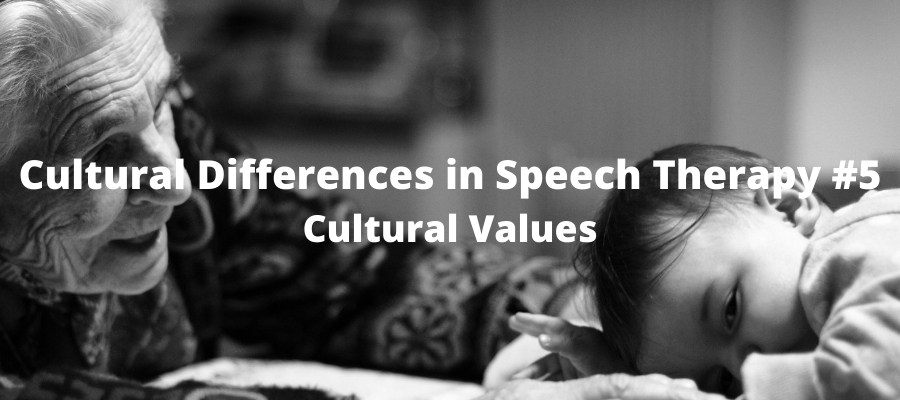Cultural Values is part of a 10-essay series. New? Start here: Cultural Differences in Speech Therapy and Assessment
What are Cultural Values?
A cultural group’s values are manifested in its view of the relationship of man to nature and of human beings to other human beings, the importance of ancestors and of the environment, and the degree of materialism (Tomoeda & Bayles, 2002). Values are passed on to children by their parents, who emphasize values such as respect for authority and identity with the family (Romero, 1983, as cited in Lynch & Hanson, 2004). Using the Latino culture as an example, values can include:
- “familismo,” or the ultimate importance of the family relationship
- “respeto,” treating authority figures such as parents, elders, and priests with respect
- “personalismo,” a personal (vs. impersonal) interest in a relationship (Tomoeda & Bayles, 2002).
Traditionally, Latinos view the family as their most valued institution, with their religious and folk beliefs as the essential aspects of the family system (Madsen, 1974; Samora, 1963; Zaldivar, 1994, as cited in Salas-Provance et al., 2002).
The Effects of Cultural Values on Assessment and Treatment
Communication within the American public school system requires a child to be a child who is well-educated, understands the importance of interacting and relating to others with respect and dignity (Zuniga, 1988a , as cited in Lynch & Hanson, 2004). One way that children are expected to exhibit respect is by generally remaining quiet and not interrupting when two adults are speaking (Valdes, 1996, as cited in Rodriguez & Olswang, 2003).
Absolutely! you might be saying. But what about children who are “educated” to not to speak unless directly asked a question by an adult? Or what about cultures that Delgado-Gaitan (1994) discusses who consider a child who asks questions to be rebellious?
In a survey of Mexican-American and Anglo-American mothers, the Mexican-American mothers placed higher value on characteristics of conformity than self-direction or social traits, desiring to teach their children to be polite to adults and to obey parents and teachers. By comparison, Anglo-American mothers placed higher value on self-direction and social traits and believed it important to teach children to express curiosity about many things (Rodriguez & Olswang, 2003).
If you are getting the sense that a child has more abilities than she is demonstrating, you might want to enlist the assistance of the child’s siblings or classmates, as the child may feel more comfortable talking openly with them rather than interacting with the adult clinician.
On the assessment side, the fact that some children may be taught to respect adults by remaining quiet and not asking questions could make obtaining a representative speech sample difficult. This factor is particularly crucial to the assessment of communication disorders. In our practice we have found dynamic assessment when coupled with a story-telling exercise to be incredibly powerful. We often get initial story telling samples that are short and resemble impairment. After we give an example, they often say something like: “Is that what you want?” They then proceed to double or triple the length of the story in a single session. Whether this is a matter of a child not having experience with telling a story or being reserved, it doesn’t matter. It is not an impairment. If we had not been open to the possibility of something else influencing their behavior they may have ended up on our caseload.
Questions for Big Thinking
Which “manners” were the most important to your mother and father? What did you get praised for? Imagine you arrived home from first or second grade. What question were you most likely asked? What did you do today? Did you have a good day? Who did you play with? Did you behave?
In our next essay we will talk about Home Language Use.
Want to read about all the cultural parameters in one place, get CEUs and a helpful chart?


